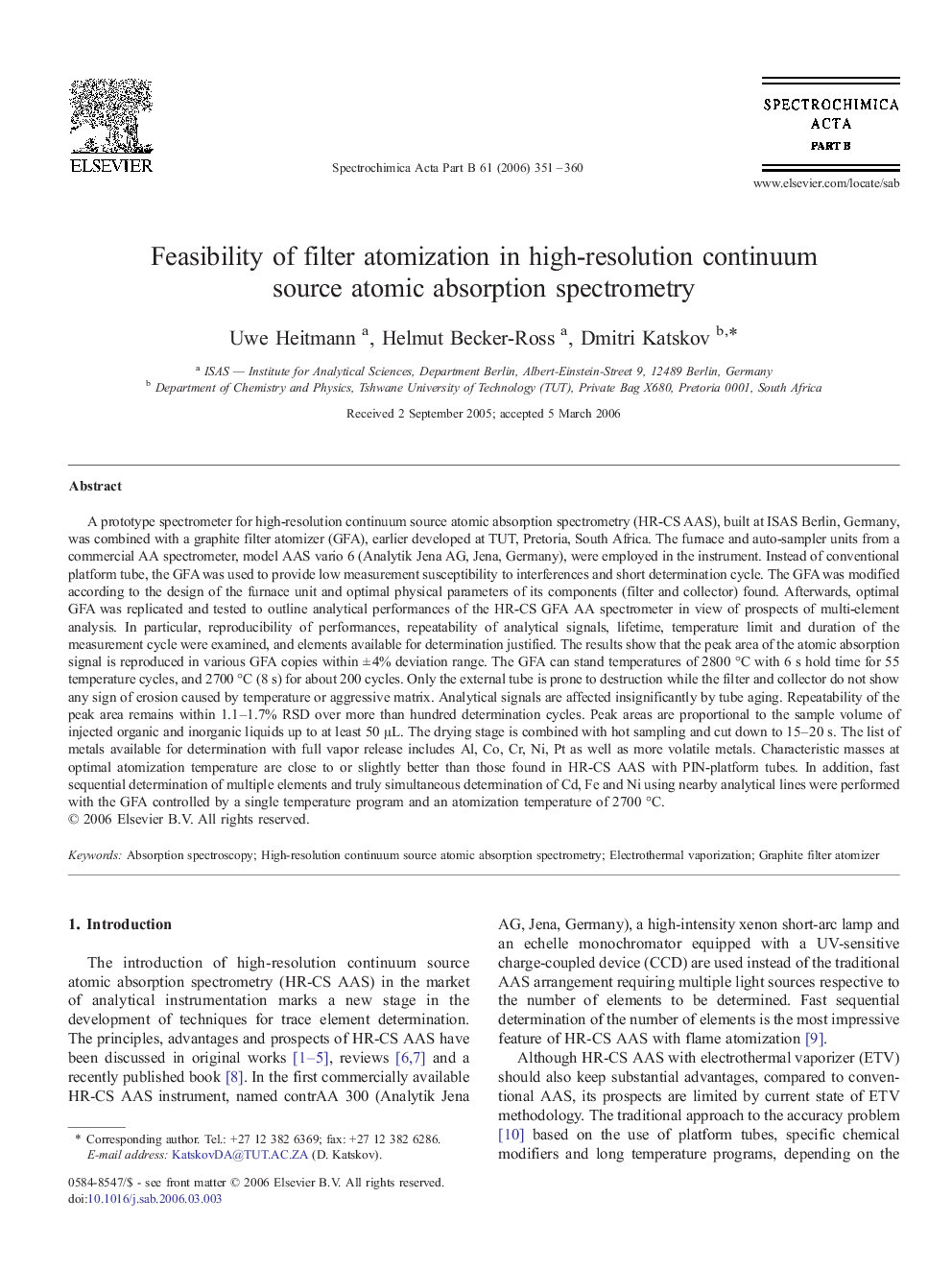| Article ID | Journal | Published Year | Pages | File Type |
|---|---|---|---|---|
| 1241133 | Spectrochimica Acta Part B: Atomic Spectroscopy | 2006 | 10 Pages |
A prototype spectrometer for high-resolution continuum source atomic absorption spectrometry (HR-CS AAS), built at ISAS Berlin, Germany, was combined with a graphite filter atomizer (GFA), earlier developed at TUT, Pretoria, South Africa. The furnace and auto-sampler units from a commercial AA spectrometer, model AAS vario 6 (Analytik Jena AG, Jena, Germany), were employed in the instrument. Instead of conventional platform tube, the GFA was used to provide low measurement susceptibility to interferences and short determination cycle. The GFA was modified according to the design of the furnace unit and optimal physical parameters of its components (filter and collector) found. Afterwards, optimal GFA was replicated and tested to outline analytical performances of the HR-CS GFA AA spectrometer in view of prospects of multi-element analysis. In particular, reproducibility of performances, repeatability of analytical signals, lifetime, temperature limit and duration of the measurement cycle were examined, and elements available for determination justified. The results show that the peak area of the atomic absorption signal is reproduced in various GFA copies within ± 4% deviation range. The GFA can stand temperatures of 2800 °C with 6 s hold time for 55 temperature cycles, and 2700 °C (8 s) for about 200 cycles. Only the external tube is prone to destruction while the filter and collector do not show any sign of erosion caused by temperature or aggressive matrix. Analytical signals are affected insignificantly by tube aging. Repeatability of the peak area remains within 1.1–1.7% RSD over more than hundred determination cycles. Peak areas are proportional to the sample volume of injected organic and inorganic liquids up to at least 50 μL. The drying stage is combined with hot sampling and cut down to 15–20 s. The list of metals available for determination with full vapor release includes Al, Co, Cr, Ni, Pt as well as more volatile metals. Characteristic masses at optimal atomization temperature are close to or slightly better than those found in HR-CS AAS with PIN-platform tubes. In addition, fast sequential determination of multiple elements and truly simultaneous determination of Cd, Fe and Ni using nearby analytical lines were performed with the GFA controlled by a single temperature program and an atomization temperature of 2700 °C.
